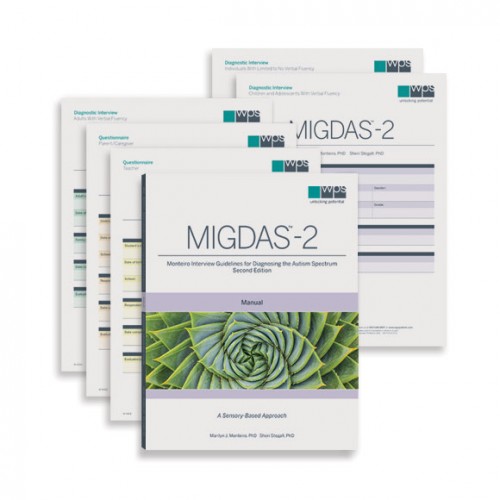Monteiro Interview Guidelines for Diagnosing the Autism Spectrum (MIGDAS 2)
- Ages Toddlers, children, adolescents, and adults
- Testing Time Varies; 30-90 minutes depending on format
- Administration Individual
-
Product Code W-690 ( MR #067283 )
* Qualifications required to purchase this item. Click here to complete the qualifications form.
* Regional restriction: This item is only available for sale within Canada.
Price $396.00
Contents
-
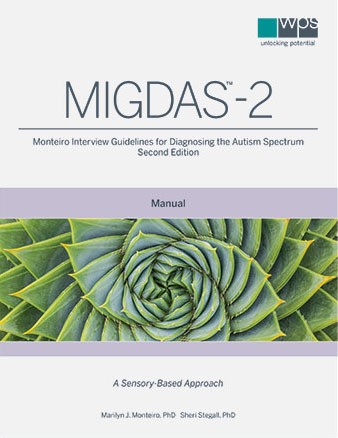
Monteiro Interview Guidelines for Diagnosing the Autism Spectrum (MIGDAS 2)
MIGDAS 2 Manual
A Sensory-Based Approach
$181.20 -
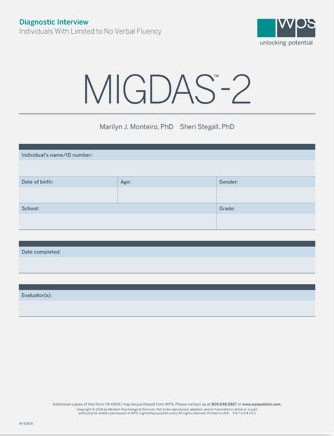
Monteiro Interview Guidelines for Diagnosing the Autism Spectrum (MIGDAS 2)
MIGDAS-2 Diagnostic Interview for Individuals with Limited to No Verbal Fluency Forms (5)
$58.80 -
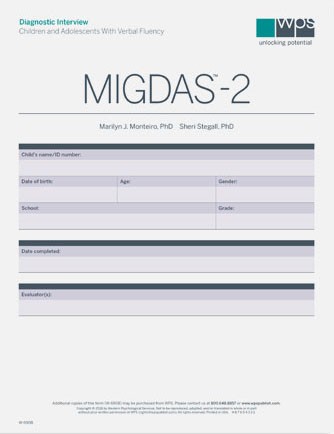
Monteiro Interview Guidelines for Diagnosing the Autism Spectrum (MIGDAS 2)
MIGDAS-2 Diagnostic Interview for Children and Adolescents with Verbal Fluency Forms (5)
$58.80 -
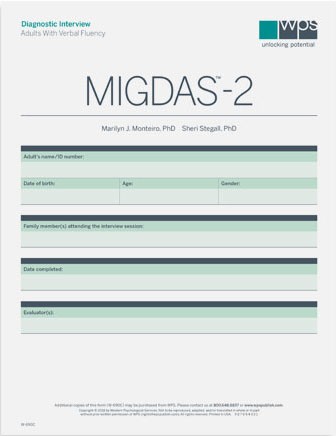
Monteiro Interview Guidelines for Diagnosing the Autism Spectrum (MIGDAS 2)
MIGDAS-2 Diagnostic Interview for Adults with Verbal Fluency Forms (5)
$58.80 -
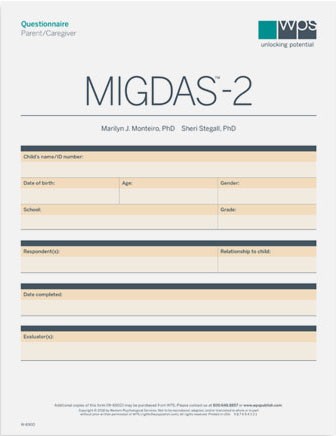
Monteiro Interview Guidelines for Diagnosing the Autism Spectrum (MIGDAS 2)
MIGDAS-2 Parent/Caregiver Questionnaires (5)
$48.00 -
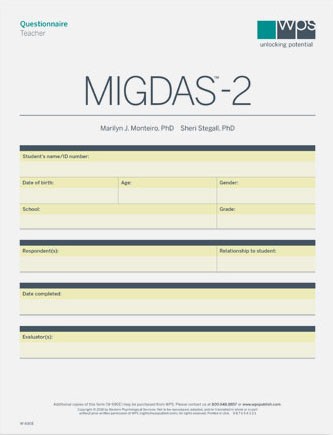
Monteiro Interview Guidelines for Diagnosing the Autism Spectrum (MIGDAS 2)
MIGDAS-2 Teacher Questionnaires (5)
$48.00
- Interactive interview techniques: The MIGDAS-2 provides detailed, concrete guidelines for conducting interactive diagnostic interviews with children, adolescents, and adults suspected of having ASD.
- Parent/caregiver and teacher participation: The MIGDAS-2 provides structured guidelines for obtaining key information from parents/caregivers and teachers about the individual’s behavior in home and school settings.
- Comprehensive qualitative information: The MIGDAS-2 is a unique evaluation tool that guides the evaluator to make a diagnosis based on direct interactions with the individual being evaluated and the individual’s parents/caregivers and teachers.
- Sensory-based approach: Emphasizing the use of sensory materials and encouraging discussion of areas of high interest to the individual, the MIGDAS-2 process provides a system for evaluators to gather distinctive examples of behavior patterns often seen in individuals with ASD.
-

Monteiro Interview Guidelines for Diagnosing the Autism Spectrum (MIGDAS 2)
MIGDAS 2 Manual
A Sensory-Based Approach
$181.20 -
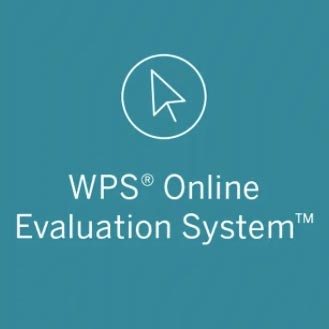
Monteiro Interview Guidelines for Diagnosing the Autism Spectrum (MIGDAS 2)
MIGDAS 2 Online Manual
A Sensory-Based Approach
WPS Online Evaluation System
$154.80 -

Monteiro Interview Guidelines for Diagnosing the Autism Spectrum (MIGDAS 2)
MIGDAS-2 Diagnostic Interview for Adults with Verbal Fluency Forms (5)
$58.80 -

Monteiro Interview Guidelines for Diagnosing the Autism Spectrum (MIGDAS 2)
MIGDAS-2 Diagnostic Interview for Children and Adolescents with Verbal Fluency Forms (5)
$58.80 -

Monteiro Interview Guidelines for Diagnosing the Autism Spectrum (MIGDAS 2)
MIGDAS-2 Diagnostic Interview for Individuals with Limited to No Verbal Fluency Forms (5)
$58.80 -

Monteiro Interview Guidelines for Diagnosing the Autism Spectrum (MIGDAS 2)
MIGDAS-2 Parent/Caregiver Questionnaires (5)
$48.00 -

Monteiro Interview Guidelines for Diagnosing the Autism Spectrum (MIGDAS 2)
MIGDAS-2 Teacher Questionnaires (5)
$48.00
- Copyright 2018

 Proud to be Canadian
Proud to be Canadian